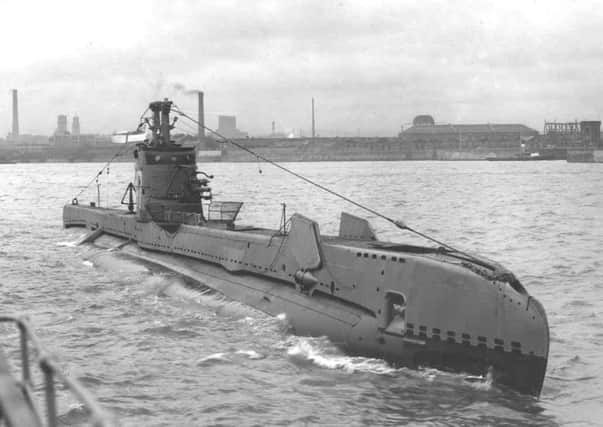Friendly fire kept secret for more than 50 years


This entailed a potentially hazardous voyage across the Mediterranean, where the Royal Navy still held sway, despite the mixed fortunes of the Army. Unbeknown to the Germans, the British had cracked their secret Ultra code and were reading it in ‘real time’. This, however, caused problems. The British had to go to great lengths to conceal this fact with elaborates operations and ruses. One such ruse was to fly an aircraft over shipping prior to an attack by a submarine, leading them to believe they had been spotted by the plane and not as a result of the code being cracked. In November, 1942, a signal was received that a merchantman, the SS Scillin, was about to leave the port of Tripoli in Libya. On board were over 800 British POWs, including Scots Guardsman Daniel Allan, from Bonnyrigg. The ship was very crowded. Indeed it was the subject of a protest by the Medical Officer. It was to no avail. The ship set sail unaware that its fate was already sealed. A decision had been made at the highest level that POW ships had to be attacked so as not to alert the Germans. The submarine HMS Sahib was on patrol when she was sent a signal to intercept the Scillin. What happened next is shrouded in mystery, secrecy and controversy. On the night of November 14, the submarine was running on the surface. They spotted a merchant man sailing without lights. Lt John Bromage stated that he thought the ship was heading towards, not away from North Africa and presumed it to be an enemy vessel. He immediately called the gun team to action stations and they fire two shells from the deck gun. Both miss the target. The ship began to slow and Bromage ordered a single torpedo to be fired. It rapidly covered the 750 yards between them and slammed into the hold of the Scillin with a vivid flash and loud explosion. This account is contrary to the submarine’s patrol log, which states quite clearly that they were sent an intercept course by radio message from Malta. Whatever the truth, the POWs in the hold had little to no chance of survival. Those not killed by the initial explosion were rapidly drowned by the influx of sea water. The Italian guards were reported to have battened down the hatches to the hold. This was disputed by the Italians. An attempt was made to charge them with war crimes, but this never happened. In one short minute the ship rolled over and sank to the bottom of the Med. The submarine closed on the scene and prepared to take on survivors who were struggling for survival in the water. As they neared the men, the sailors on deck realised to their horror that some of the men were shouting to them in English, “British POWs”. They had sunk a POW ship. The Sahib rescued 27 POWs (26 British and one South African), Scillin’s captain and 34 Italian crew and soldiers. At this point the captain received a message from the bridge that an enemy ship was closing rapidly and endangering the submarine. With a heavy heart the captain ordered the submarine to turn away from the wreck and dive. It’s probable that a number of men were left behind in the dark, many miles from land, with little hope of rescue. The casualties caused in the attack were truly horrendous – estimates vary from 787 to 806 POWs killed, including Daniel Allan, and anywhere up to 79 Italians. The final count has never been fully verified. At a subsequent inquiry into this ‘friendly fire’ tragedy, Lt Bromage was cleared of any wrongdoing as the ship was unmarked and at the time he firmly believed that the ship was carrying Italian troops. The Ministry of Defence kept this incident a closely guarded secret for 54 years. Sadly this tragedy was not a one-off, but the last in a series of sinkings of POW ships, including the Sebastiano Venier 9/12/41, the Ariosto,15/2/42, Ogaden 12/8/42, Nino Bixio 17/8/42, and the Loreto 13/10/42. In total, in 11 months, more than 2000 Allied POWs died in transit from North Africa. They are commemorated on the El Alamein memorial and on a special memorial at the National Arboretum.